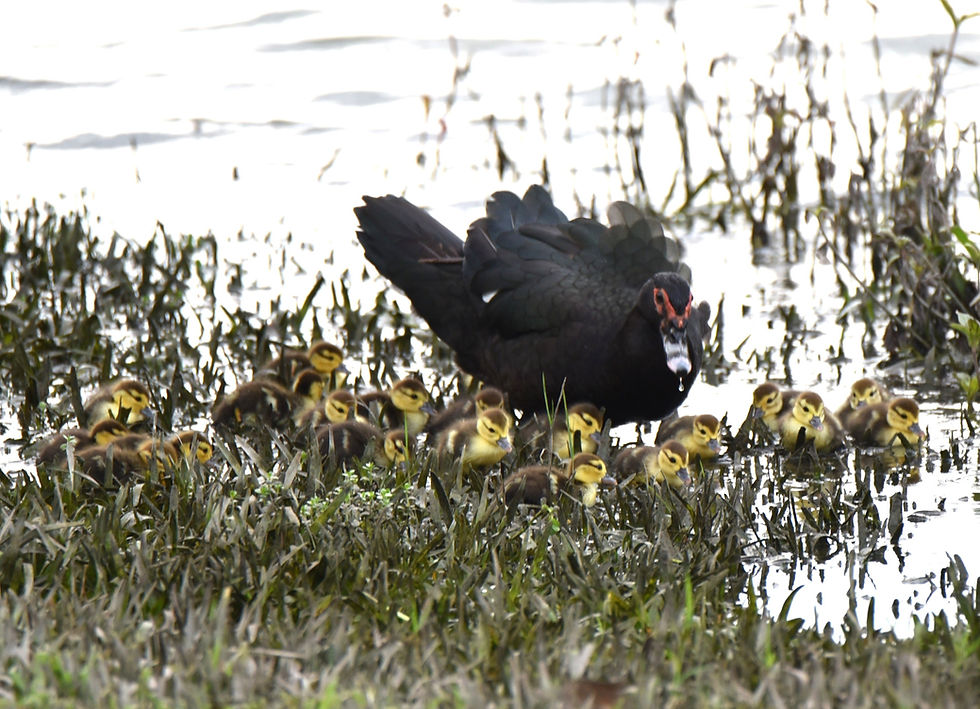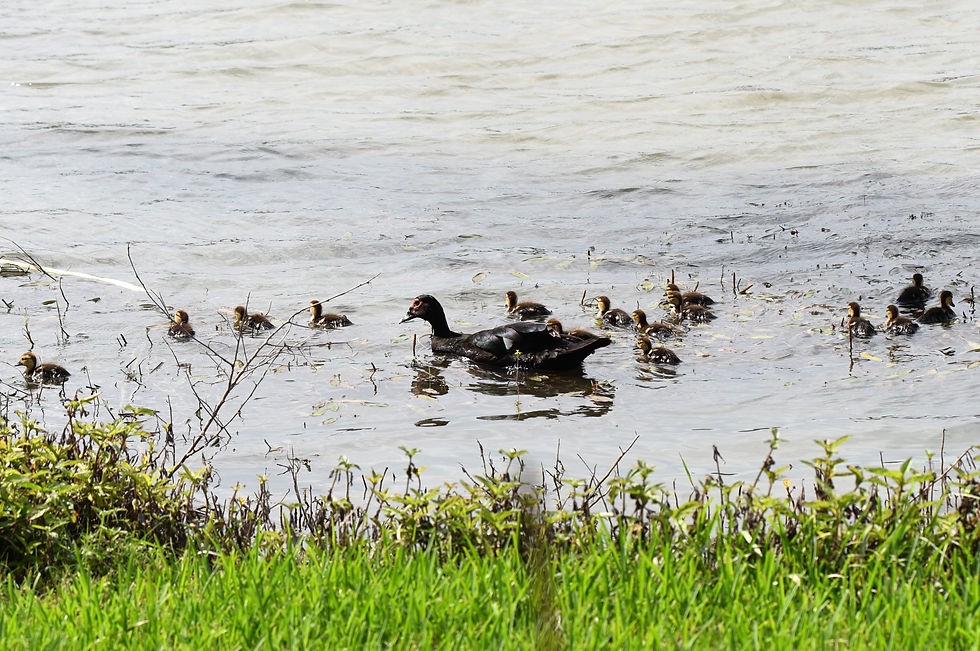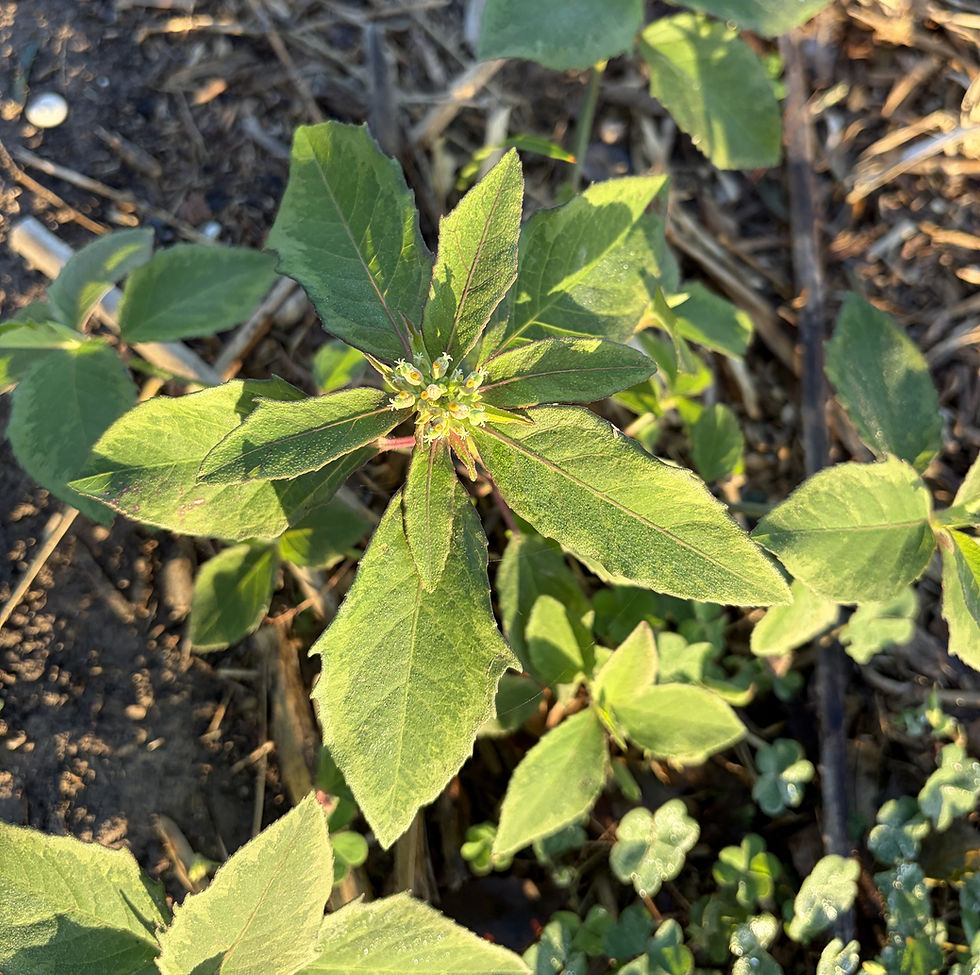Domestic muscovy hens are dedicated moms
- jjvanm
- Sep 7, 2025
- 3 min read

Story and photos by Anita Westervelt
Published September 6, 2025 in the McAllen Monitor
It was just before eight o’clock on a pleasant mid-April morning when a momma domestic muscovy introduced her 20 chicks to the weedy water at the edge of our resaca in Cameron County.
Once muscovy chicks are hatched, the female is the sole caregiver and can successfully raise a large brood on her own. Male domestic muscovy drakes are seasonally monogamous; they do not mate for life, nor do they help raise the chicks.
The mother hen teaches an interesting curriculum to her young. Rather than feeding her chicks, she teaches them to forage, guiding them on land to soft insects and bugs, like ants, flies, larvae and small spiders. Muscovy are omnivores; chicks also learn to eat small pieces of grass and weeds and tiny seeds. They mimic the mother hen, learning to sift through soil and leaf litter for seeds and other food.
By week two, momma hen will introduce her chicks to water where they learn to eat aquatic vegetation and insects and algae, worms, snails and swimming bugs. Her life skills lessons include navigation, safety and social integration: where to find water and safe shelter, identifying and avoiding dangers in their environment and learning to be part of a flock.
As I would periodically gaze out over the resaca during the day, I’d see what looked like an alligator in the distance, only to grab the binoculars and discover it was momma duck and a straight line of chicks in close quarters behind her, crossing the resaca.
At one month old, there were 15 ducklings. In the water, they would circle around the mother hen, but line up behind her when paddling to other reaches of the resaca. Little by little, the number of babies dwindled.

Domestic as well as wild muscovy have a long list of predators: Coyotes, bobcats, domestic cats and dogs, raccoons, opossums, hawks, owls, herons, snapping turtles and alligators are a threat. Muscovy eggs and ducklings are the most vulnerable.
By about week eight, the chicks had grown to half the size of the hen, their feathers dark brown, bills grey with a black tip. By then, there were eight. Instead of following mom, she would be following them as they meandered through the grass.
The chicks now are around six months old. There have been only six for a while now. I did not notice when the mother left them on their own. Typically, a mother hen’s supervision and protection end when the ducklings are 12 to 14 weeks old and they are in full feathers and able to fly in short spurts. Only then will she get on with her life, possibly, joining or returning to a large flock.
Muscovy are social. Siblings maintain a strong bond and will continue to stick together; if they eventually join a larger flock, they will still roost and forage together.
For protection, muscovy roost in trees or on rooftops. Their webbed feet have strong claws, which help them perch. Our six young adults seem to feel safe overnight on the railing of our fishing dock, which we had built close to where their mother introduced them to the water. Perhaps they consider it home.

Wild Muscovy have a distinct color palette of black and white. Domesticated Muscovy have many different colors or can be mostly dark brown or black mixed with white, or all black with lavender and green luster. A domestic muscovy can weigh as much as 10 to 15 pounds with a wingspan of 54 to 60 inches. Wild muscovy are smaller. Females are about half the size of their male counterpart, wild or otherwise.

For birding enthusiasts, identifying muscovy can be confusing. To make the distinction between wild and domestic easier, wild muscovy’s native range is only in Hidalgo, Starr and Zapata counties in Texas, where they are protected. In any other area, they are most likely domestic.
Male muscovy, whether wild, or domestic, at about 16 weeks of age, and females at about 20 weeks, begin developing caruncles, those unique red growths around their eyes and bills. Males’ caruncles will become more dramatic and larger than those on a female. Caruncles will continue to grow as the ducks age.

- 30 -





